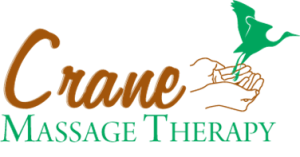People seek massage therapy for a wide variety of reasons, from simple relaxation to the proven health benefits massage gives.
The American Massage Therapy Association found in its 2011 consumer surveys that 90 percent of surveyed consumers believe that massage reduces pain; 18 percent of surveyed adults received a massage in 2011.
Of those who had massages, 30 percent said they received a massage for relaxation, likening their treatment to a “staycation.” The remainder said they primarily sought massage for specific health needs like pain management, control of headaches, and recovery from injuries.
Health conditions that can be improved by massage include back, shoulder or neck pain, inflammatory or joint diseases like arthritis or tendinitis; muscle tightness due to tension; headaches, including migraines; premenstrual syndrome; repetitive motion injuries, like carpal tunnel syndrome; blood and lymphatic circulatory problems, like lipedema; allergies, sinusitis and asthma; TMJ or other jaw disorders; myofascial pain-related disorders like fibromyalgia and Chronic Fatigue Syndrome; and rehab following a hospital stay or other severe injury.
People with high stress levels and associated issues like sleep disorders, depression, anxiety or high blood pressure also have found massage to be beneficial, because it releases endorphins. Studies have proven repeatedly that stress has some part in as much as 90% of illnesses (Centers for Disease Control, 1995). The proven benefits of massage in reducing stress, including improving relaxation, lessening muscle tension and reducing blood pressure, also are a major draw for individuals seeking massage.
A 2010 study by Cedars-Sinai Medical Center’s Department of Psychiatry and Behavioral Neurosciences confirms previous research postulating that massage therapy strengthens immune function, both for those who are healthy and in those suffering from immunodeficiency. Specifically, massage helps increase white blood cell levels, which helps the body fight off infection. In the Cedars-Sinai study, a single 45-minute Swedish massage increased levels of lymphocytes (white blood cells that help the immune system) while decreasing levels of arginine vasopressin, a hormone that increases aggression, and cortisol, the “stress hormone.”
In another study by the University of Miami, women with breast cancer received massage three times per week for five weeks; 80 percent of patients had stronger immune systems afterward, and reported decreased stress and anxiety. This indicates that massage therapy can alleviate stress and allow muscles to relax.
The university also studied fibromyalgia patients who were given 30-minute massages twice a week for five weeks. Fibromyalgia is a still-mysterious condition that results in otherwise unexplained muscle pains, aches and stiffness, among other easily misdiagnosed symptoms. The patients who received the massage therapy regimen said their pain, fatigue and stiffness levels were lessened, and they were able to sleep better.
These benefits aren’t just for those diagnosed with disease; the same results have been achieved with healthy bodies as well, like in the Cedars-Sinai study, suggesting that anyone can experience the positive effects of massage therapy.
